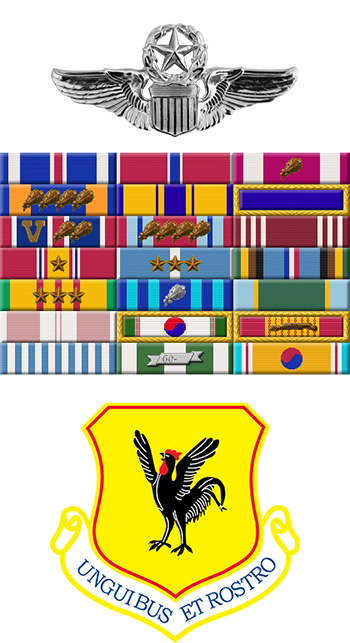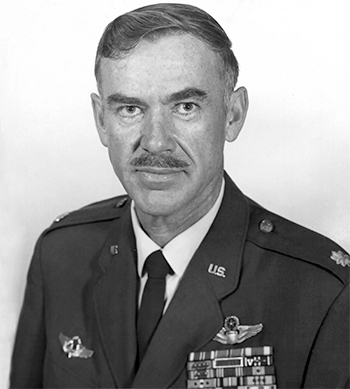
|
John C. Carmichael |
 |
|||
| Rank, Service | ||||
Lieutenant Colonel O-5, U.S. Air Force |
||||
| Veteran of: | ||||
|
||||
| Tribute: | ||||
John Carmichael was born on November 2, 1928, in Bowling Green, Kentucky. He enlisted in the U.S. Air Force on October 3, 1950, and served as a Teletype Operator until entering the Aviation Cadet Program of the Air Force on March 6, 1951. He was awarded his pilot wings and commissioned a 2d Lt in the U.S. Air Force at Vance AFB, Oklahoma, on May 10, 1952. Lt Carmichael next attended Gunnery School and F-51 Mustang Combat Crew Training from May to August 1952, followed by service as an F-51 and then F-86 Sabre pilot with the 67th Fighter Bomber Squadron of the 18th Fighter Bomber Group in Korea from September 1952 to July 1953. During this time he flew 25 combat missions in the F-51 and 34 combat missions in the F-86. After returning to the United States, Capt Carmichael served as an instrument flight instructor with the 3595th Combat Crew Training Squadron at Nellis AFB in the F-80 Shooting Star, F-86 Sabre, F-100 Super Sabre, and the T-33. He served as a Flight Instrument Advisor with the 3565th Flying Training Squadron at James Connally AFB, Texas, from February 1958 to June 1961, and then as a member of the Standardization Board with the 3511th Flying Training Squadron at Randolph AFB, Texas, from June 1961 to December 1962. His next assignment was as a staff officer with Headquarters U.S. Air Forces in Europe at Lindsey AS, West Germany from December 1962 to March 1964, followed by service as a T-39 Sabreliner Flight Training Instructor with the 7101st Air Base Wing at Wiesbaden AB, West Germany, from April to December 1964. Maj Carmichael served as Chief of the Standardization Branch with the 7101st Air Base Wing from December 1964 to December 1965, and then as a Flight Instructor and as Chief of the Instrument Procedures Standardization Branch with the 3511th Flying Training Squadron at Randolph AFB from December 1965 to January 1971. Lt Col Carmichael's next assignment was as an Operations Staff Officer with Headquarters 7th Air Force at Tan Son Nhut AB, South Vietnam, from January to December 1971, followed by service as Assistant to the Deputy Commander for Operations and then Wing Chief of the Stan/Eval Division at the 4500th Air Base Wing at Langley AFB, Virginia, from January 1972 until his retirement from the Air Force on August 1, 1975. John Carmichael Flew West on May 9, 2002, and was buried at Fairview Cemetery in Bowling Green, Kentucky. |
||||
|
||||

